6. Death Proof (2007)
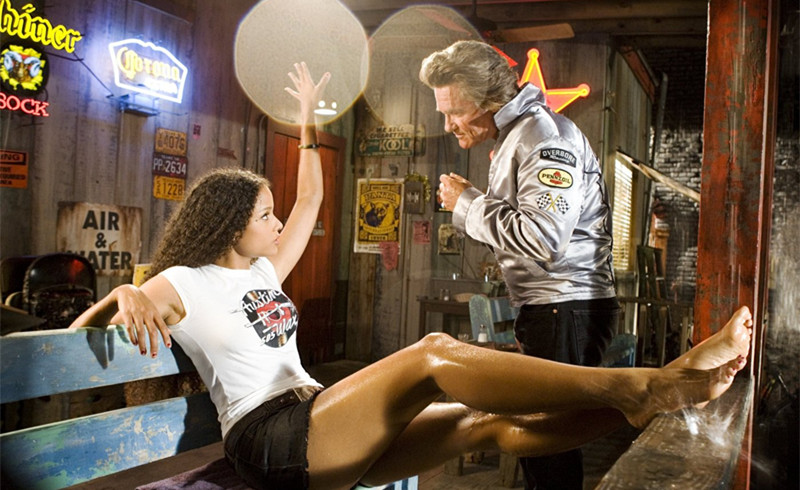
As mentioned earlier, if there’s a filmmaker that revels in the cinematic experience from days of old, it’s Quentin Tarantino. With this film, which was originally released as a ‘Grindhouse’ double bill with a film by the similarly 70’s exploitation loving Robert Rodriguez, Planet Terror, Tarantino takes the road movie, fuels it with the energy of Faster, Pussycat! Kill! Kill! and The Female Bunch to maintain a grip on the viewer that never lets up. If shown at a Drive-In, it would be sure to send audiences and their cars wild with excitement.
Ageing and mysterious stuntman Mike McKay (Kurt Russell) is more than the charming man he seems. After a raucous night at a bar, he kills Pam (Rose McGowan) with his ‘death-proof’ stunt car, as well as group of young women up the road. Some time later, he meets his match when a car of film industry professionals and wannabes, including regular Tarantino stuntwoman Zoë Bell playing herself, take him on in a 1970 Dodge Challenger (the very same car from classic 70’s road movie, Vanishing Point).
Despite the copious amounts of modern car centric movies, this one had always held it’s own by being so steeped in it’s influences, working to make something totally unique in a contemporary context. As intended, it evokes the grit, sleaze and economy of films shown at what became known as ‘Grindhouse’ theatres in the 70’s, venues that would almost exclusively show these cheaply made and explicit films to a widening audience. However, with those venues now a thing of the past, and this particular throwback being so car and road centric, it’s a no brainer to be seen on the big screen of Drive-In theatre, and not just for the action.
As was Tarantino’s intention, Russell delivers a truly image-changing performance here, being an actor known for frequenting the role of the hero throughout his career, yet transforming into an incredibly evil presence behind the wheel in this film. Though his hand is given away around the halfway mark with murder of Pam, it can’t help put the audience on edge as to what he’s going to do next, especially with the unpredictability of the casting. When the film reaches the final chase, the exhilaration is enough to send audiences crazy with it’s culminating stakes and violence.
With a lot of the action being shot in and around a variety of cars, another layer of immersion would be added for a Drive-In audience viewing the film from their cars as those particular scenes become more and more exciting.
7. Day For Night (1973)
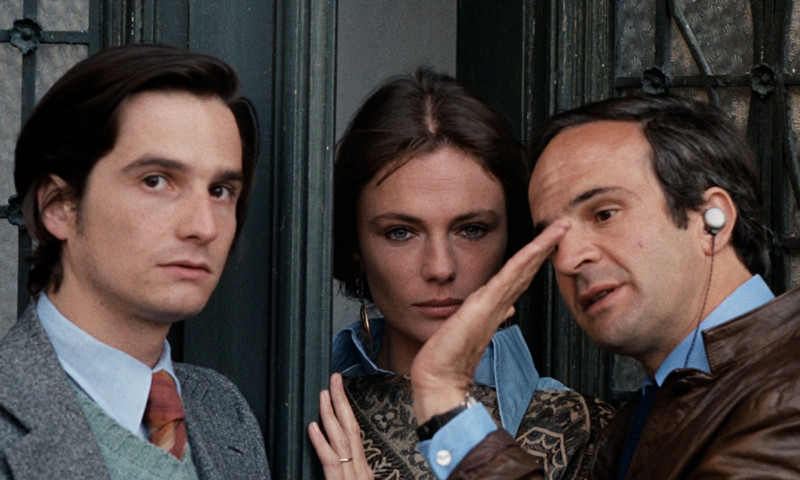
Back to movies about moviemaking now, and one that modern audiences will certainly get a lot out of. From the way legendary filmmaker François Truffaut constructs shots set on film sets to the intricately and oftentimes hilariously navigated inter-character dramas, this film transcends near all barriers to make for a unique cinematic experience, one that the audience would no doubt feel a part of seeing it at a Drive-In.
Going through the loves, losses and lives of a tight knit film crew on the set of a contemporary melodrama, Truffaut’s film (in which he appears as the fake film’s director) takes audiences on a trip of discovery into what the filmmaking process entails on a day to day basis. From actor Alphonse’s (Jean-Pierre Léaud) distracting romance with British actress Julie (Jacqueline Bisset) to increasing worries surrounding lead star Alexandre (Jean-Pierre Aumont), director Ferrand (Truffaut) has a lot on his hands.
Though events do waver from fun to quite dark during the course of the film, Truffaut manages to keep this exploration into his life’s work incredibly lighthearted and fun, with an excellent and ever revolving cast and intriguing dilemmas. Not only does the ever present setting of a film set add to the fun, but creates a layer of metatextuality, especially when Truffaut doesn’t want the audience to know whether they’re watching a scene from the film within the film, Meet Pamela, or the actual film.
Despite the singular environment, there is such a great sense of discovery and escapism throughout that watching the film at home or even in a movie theatre feels like a disservice. In the same way that Two-Lane Blacktop begs for the open road to be travelled, Truffant opens the world up to Ferrand’s film, making viewing it at a Drive-In cinema the perfect way to be fully immersed in both Meet Pamela and Day For Night. Additionally, the blocking and cinematography around the film sets themselves echo the scale of a Drive-In itself, which would no doubt engulf the audience through the screen and really make them feel a part of the film.
The collective audience would surely be hooked by Truffaut’s signature way of lacing interpersonal drama through the plot too. Though Alphonse is the closest the film comes to having a lead character, his story, while engaging, takes second place next to the ‘hangout’ element at the core of the story, which drives the momentum and creates an atmosphere of endless discovery through the characters and unpredictability. It’s a rare film that captures the feeling of endless exploration, which perfectly pairs with viewing outdoors at a Drive-In.
8. Messiah Of Evil (1973)
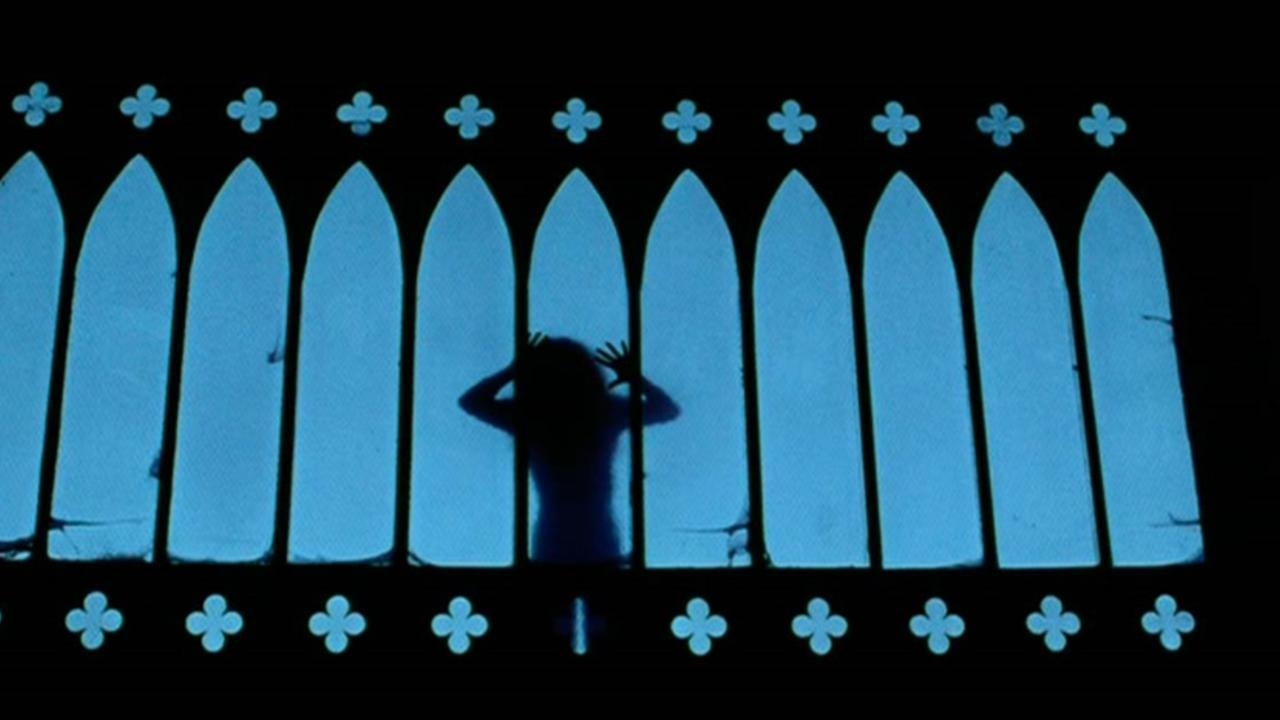
Revelling in unpredictability, shock and exploitation, this surrealistic horror ticks all the boxes. Despite it’s mixed reviews upon release, Willard Huyck and Gloria Katz’s dreamlike thriller has become a cult classic today, and often listed as one of the best horrors of the 70’s for it’s uniqueness and offbeat sensibility. If experienced under the night sky at a Drive-In, the thrills and shocks it holds would know no bounds, especially during the scene actually set in a movie theatre.
On a trip to locate her estranged father, Arletty (Marianna Hill) is at a loss when all she comes across is a diary entry by him from beyond the grave, leading her to a dead end. However, after she meets wealthy bachelor Thom (Michael Greer) and his seductive companions Toni (Joy Bang) and Laura (Anrita Ford), Arletty soon discovers that the Californian town she’s been lead to has many horrors lying just beneath the surface.
Not quite grindhouse, not quite giallo, this terrifically under-seen horror has inspired so much with little recognition, being one of the first to maintain such an eerie and dreamlike atmosphere consistently throughout, both immersing audiences and perplexing them. During the first act, Arletty’s ascent to the seaside town and it’s layers of intrigue are best experienced in an venue such as a Drive-In, with the open air informing this initial sense of exploration and excitement, soon to be turned into horror that will always keep the collective audience guessing. As the undead cult that terrorise the town emerges, and the death scenes become increasingly inventive, the surrealism creeping through the runtime eventually mutates into a full on nightmare, with inspired cinematography just around every corner.
This kaleidoscopic window into the film is omnipresent, from the strange, looming murals on the walls of the abandoned coastal mansion that Arletty’s father once lived in to the sparseness of the theatre that Toni is eventually eaten alive in, soon to be flooded with blood red lighting as she is murdered by a hoard of zombies in front of the soon to be blood red cinema screen. The effect it has on the film makes for one of the most unique horror experiences, and one that deserves to be seen on a big screen in the open air.
9. Dirty Mary, Crazy Larry (1974)
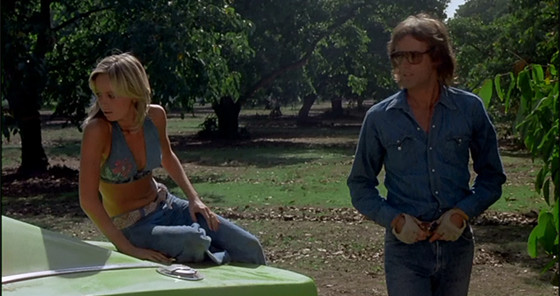
A staple of the exploitation circuit after his work with Roger Corman, Peter Fonda’s career took a slightly ambiguous turn after following up his immense success with Easy Rider. Despite his directorial debut, The Hired Hand, being a brilliantly made early example of an acid-western, he hit his stride after leading up this thrill ride as the titular ‘Crazy Larry’. It’s the type of car centric, no holds barred rollercoaster that just begs to be seen from the very surroundings it’s shot within.
In an attempt to fund their careers as NASCAR racers, Larry (Fonda) and Deke (fellow exploitation regular Adam Roarke) successfully rob a local supermarket and proceed to go on the run. However, when Larry’s old flame Mary Coombs (Susan George) demands to be taken along for the ride, their escape from local sheriff Carl (Kenneth Tobey) becomes increasingly difficult.
Though a rather cheaply made, unassuming car flick, the way director John Hough keeps shooting most of the action from within the car, via either the passenger or backseats, creates a sense of endlessly building scale as pursuing police cars behind them and helicopters in the sky are shot from within the confines of the ’66 Chevy Impala. It’s a point of view that would often be the exact same one audiences at a Drive-In would have, creating a unique mirror image and a rather special experience. The endlessly rolling road Mary, Larry and Deke burn rubber down can’t help but fuel imagination, something audiences at a Drive-In would instantly connect with from within their own cars, creating a greatly immersive experience.
Although the plot is fairly straightforward, it’s clear Hough was aiming for nothing much more than a thrilling road movie that rarely lets the audience out of it’s grasp, with the times spent stationary and off the road still displaying a great sense of tension and excitement. This is then mixed with great action during the elongated chase scenes, which twists and turns as all characters race to the roar of the engines, and drive the fervour up that would be sure to send Drive-In audiences wild.
10. The Wild Angels (1966)
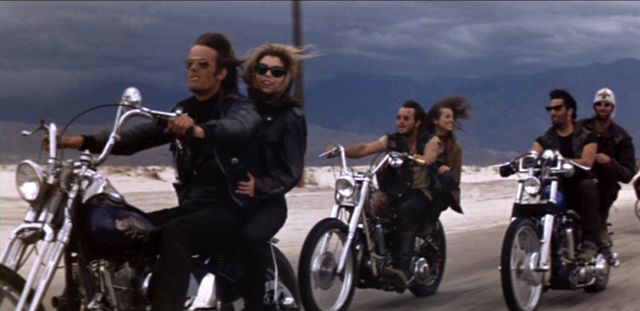
This last entry is perhaps the prototypical example of a film that perfectly pairs with a Drive-In theatre. Indeed, upon it’s release in the mid-60’s on the cusp of a counterculture explosion, this was the action packed, youth orientated lightning in a bottle that drove teens to these venues like wild tribes, knowingly or unknowingly mirroring the atmosphere on screen. It was vulgar, offensive, but above all; exciting. The cinematic youth market was never the same since.
Almost single handily kicking off the biker genre, this Roger Corman directed adventure centres around the fictitious Wild Angels biker gang and stars Peter Fonda as ‘Heavenly Blues’, head of the San Pedro chapter. Along with girlfriend ‘Mike’ (Nancy Sinatra) and live wire Joe ‘The Loser’ Kerns (Bruce Dern), the gang raise hell across California, damming ‘the man’ with wild violence, sex and rock n roll.
Though Corman and his company, American International Pictures, were usually known for capitalising upon cinematic trends, this was a rare time that they actually set a trend. It was the perfect film to come out at the perfect time, as Hollywood gradually lost it’s grasp on America’s youth and was at a loss as to their needs. The Wild Angels was one of the first times young people in the 60’s could actually relate to what was happening on screen, perfectly exemplified in the film when a representation of authority, a Preacher, out right enquires as to what ‘Heavenly Blues’, a representation of the youth, really wants. Among other things, this part of the response clicked with kids across the country, and Hollywood had to begin to rethink it’s approach – “We wanna be free! We wanna be free to do what we wanna do.”
While that was over half a century ago now, the film still holds up today with it’s sense of excitement and calls for freedom, things that, just like in 1966, would be best experienced in the fervour of a Drive-In screening. Indeed, the very notion of exploitation flicks being linked to these venues at the time largely stems from this film’s reception. Just like the first film on this list, Roger Corman tapped into Hollywood’s weaknesses and delivered something none of them could. If seen again today in such an appropriate setting as the one the film made it’s name in, it would lead to a truly exciting cinematic experience, and really demonstrate what a Drive-In is all about; collective shock, awe, and freedom through the movies.
Not only do these films pair perfectly with the excitement of a Drive-In theatre, but some are films that, sadly, are seldom mentioned anymore. While some are productions of their time and a little dated, they deserve a chance to shine in one of the best places for cinema lovers, bridging a gap between a simpler time in the film industry and today.